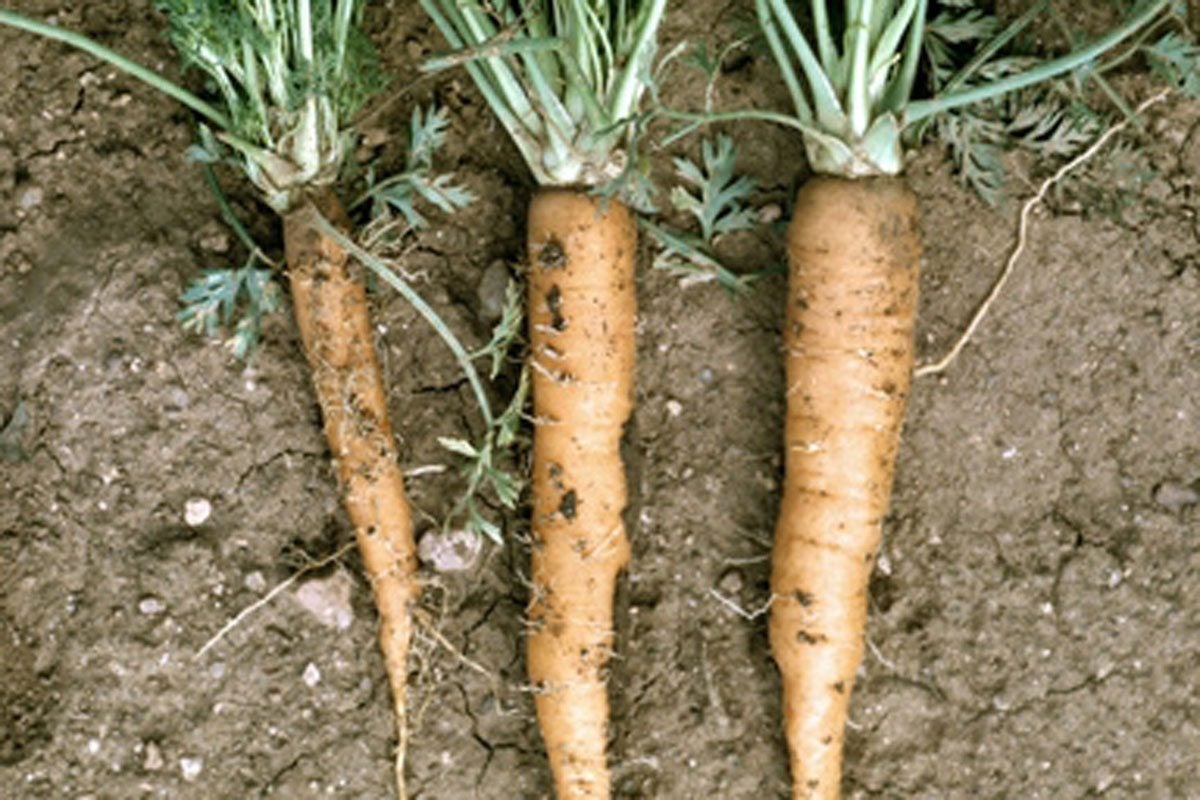Managing Aster Yellows Of Carrots – Learn About Aster Yellows In Carrot Crops

Aster yellows disease is a disease caused by a mycoplasma organism that is carried to its host plants by the aster or six-spotted leafhopper (Macrosteles fascifrons). This organism affects 300 different species within 40 plant families. Of the host crops afflicted, the largest losses of up to 80% are attributed to aster yellows of carrots and lettuce. How does aster yellows present in carrots? The following article contains information on aster yellows symptoms, specifically carrot aster yellows and its control.
Aster Yellows Symptoms
While aster yellows is found in carrots, it is by no means the only species afflicted. Any of the following commercially grown crops may become infected with aster yellows:
- Broccoli
- Buckwheat
- Cabbage
- Cauliflower
- Celery
- Endive
- Flax
- Lettuce
- Onion
- Parsley
- Potato
- Parsnip
- Pumpkin
- Red clover
- Salsify
- Spinach
- Strawberry
- Tomato
Yellowing of foliage is the first sign of aster yellows disease and is often accompanied by resetting of leaves and stunting of the plant. This is followed by excessive growth with numerous secondary shoots. Mature leaves become contorted and may drop from the plant. Older leaves may also have a slightly reddish, brown, or even purplish cast. Main branches are shorter than normal. Roots are affected, becoming misshapen. Flower parts may develop into leafy structures and seed will usually be sterile. In the case of carrot aster yellows, taproots become excessively hairy, tapered, and pale in color. The root will also have an unpleasant bitter flavor, rendering it inedible.
How is Aster Yellows in Carrots Transmitted?
Aster yellows overwinters in infected perennial and biennial hosts. It can afflict plants in greenhouses, bulbs, corms, tubers, and other propagative stock. Many perennial weeds serve as overwintering hosts, such as:
- Thistle
- Plantain
- Wild carrot
- Chicory
- Dandelion
- Fleabane
- Wild lettuce
- Daisies
- Black-eyed Susan
- Rough cinquefoil
Although aster yellows of carrots may be transmitted by the six spotted leafhopper, there are actually 12 different species of leafhopper that may transmit the organism to healthy plants. Symptoms of aster yellows will show in infected plants 10 to 40 days after leafhopper feeding. The disease usually occurs infrequently and with little economic loss, but it can be serious if dry weather forces leafhoppers to move on from feeding on wild weeds to irrigated fields.
How to Control Aster Yellows of Carrots
First, use only healthy seed, seedlings, or plants. Keep the area around the plants free from weeds where leafhoppers like to lurk. If need be, spray weeds surrounding the garden with an insecticide. Avoid rotating susceptible crops. Destroy any overwintering volunteer plants. Don’t plant near crops that have the disease and destroy any infected plants as soon as symptoms appear.
Gardening tips, videos, info and more delivered right to your inbox!
Sign up for the Gardening Know How newsletter today and receive a free copy of our e-book "How to Grow Delicious Tomatoes".

Amy Grant has been gardening for 30 years and writing for 15. A professional chef and caterer, Amy's area of expertise is culinary gardening.
-
 Zinnias On Repeat: 10 Glorious Cut-And-Come-Again Varieties For Endless Summer Bouquets
Zinnias On Repeat: 10 Glorious Cut-And-Come-Again Varieties For Endless Summer BouquetsThese zinnia varieties keep giving all summer, making them the perfect choice for dedicated cutting gardens – or just the occasional homegrown bouquet.
By Ellen Wells
-
 Create A Romantic Garden Straight Out Of Bridgerton: Regency Era Romance In Your Garden
Create A Romantic Garden Straight Out Of Bridgerton: Regency Era Romance In Your GardenTry some romantic garden ideas straight out of Bridgerton. Flowers and gardens in the Regency era were lush and charming and you can get the same look!
By Bonnie L. Grant